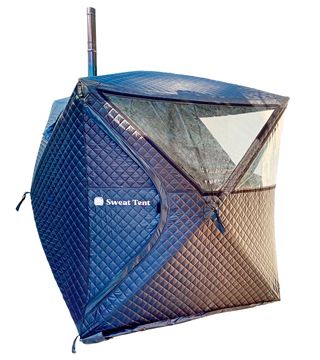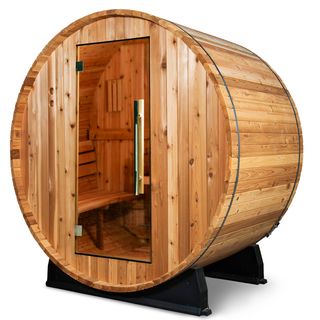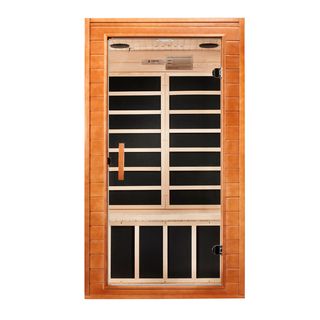From the Huberman Lab podcast to your biohacker buddy’s garage to your social feeds, saunas are everywhere right now. Part of the surge in interest (and sales) is largely thanks to science showing a connection between frequent sauna use and better physical and mental health and maybe even longevity—including some stunning evidence that it may help prevent dementia. Not to mention the whole sauna thing: the community, the relaxation, the ritual, the ahh moment.
Most of the research on brain benefits comes from Finland, where sauna bathing is a pillar in the culture of being healthy and happy. The sauna is the poor man’s pharmacy, goes one old proverb. And increasingly, science agrees.
A few years ago, when Finnish researchers dug into some overlooked data on chronic disease risk—numbers they’d been collecting on middle-aged men since the 1980s—they noticed a startling link, says Jussi Kauhanen, M.D., Ph.D., director of public health at the University of Eastern Finland and head of the research group today.
More From Men’s Health

Scientists in any other country wouldn’t have thought to include “How often do you sauna bathe?” on the lifestyle questionnaire. But in Finland, where it’s essentially as universal as diet and exercise, the question seemed only natural, Dr. Kauhanen explains.
Their results: Men who took saunas four to seven times a week had about a 65 percent lower risk of developing Alzheimer’s disease or other dementia over the next 20 years than men who did it once a week (after adjusting for other factors, like drinking and exercise). A 2020 study that tracked almost 14,000 Finnish people confirmed the earlier study’s results: Those who took saunas nine to 12 times a month had a 53 percent lower chance of dementia over the next 20 years than people who went zero to four times, and researchers have hunches about why.
How heating up helps your brain
Sitting there sweating bullets for as long as you can stand it may not look very productive, but there’s actually a lot going on in your body—including some of the same stuff that happens when you work out, Dr. Kauhanen says. Hitting the gym or the sauna lowers inflammation, believed to play a role in dementia. Both activities also trigger your body to make special proteins that promote neuroplasticity (brain-derived neurotrophic factor) and proper protein folding in the brain (heat shock proteins)—potentially warding off dementia. (FYI, ice-bath junkies: Cold plunges could have similar impacts on the brain via cold shock proteins, Dr. Kauhanen says, although there’s nowhere near the amount of evidence for this yet that there is for heat.)
Saunas may also help the brain by giving the heart a workout much like exercise does, says Christopher Chen, M.D., director of the Memory, Ageing and Cognition Centre at the National University Health System in Singapore. This not only contributes to lowering the risk of dementia but also improves how your arteries function, helps with healthy blood pressure, keeps oxygen and other nutrients flowing into your cells, and takes waste products out.
Finally, saunas are just kind of a fun place to be. Depression and social isolation are risk factors for dementia. In Finland, Dr. Kauhanen says, going to the sauna is an enjoyable and often social experience, which is linked to better psychological health over time. This type of sauna experience might be harder to get in the U. S., though, where guys avoid conversation and eye contact.
As promising as these studies may be, it’s highly unlikely that saunas are a silver bullet for dementia—but they might be one way to load a few regular bullets (like socializing or heart-health effects) into your gun, says Jason Karlawish, M.D., codirector of the Penn Memory Center at the University of Pennsylvania and author of The Problem of Alzheimer’s. There are other benefits of saunas as well, especially after working out; read more about them here.
The takeaway: If saunas make you feel good—and you’re covering your bases by maintaining generally healthy habits, especially actually working out—then you’ll likely benefit from investing time in one. Or even investing in one for your home, particularly if you want to make it part of your lifestyle.
Stay in for five to 20 minutes at a time (easier to do if you have a little ventilation), alternating with cold exposure like winter air or an ice-cold bath, so you can get back in and do it again if you choose. Start with short sessions and take a break when you need to, Dr. Kauhanen says. “Just listen to your body.”
3 Ways to Bring the Sauna Benefits Home
Infrared options don’t get nearly as hot as the 176 to 212 degrees of the typical Finnish saunas, but they still get you sweating. Traditional-style saunas hit those temps—but generally cost more.
This category breaker is a pop-up unit that’s actually wood fired. It fits three people, reaches therapeutic temps, and lets you use your backyard for other things, too. $1,200.
This solid-cedar electric model seats four and heats up to a balmy 180 degrees. $9,014.
Infrared options heat your body directly, not the air around you. This middle-of-the-road model seats one or two and has a speaker system. $2,100.





Comments are closed.